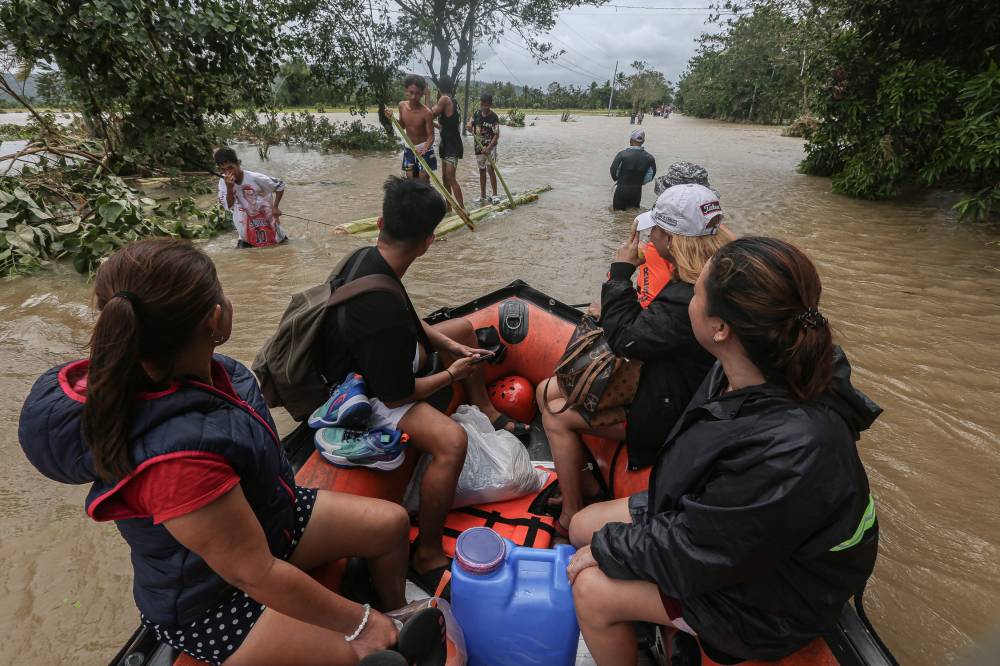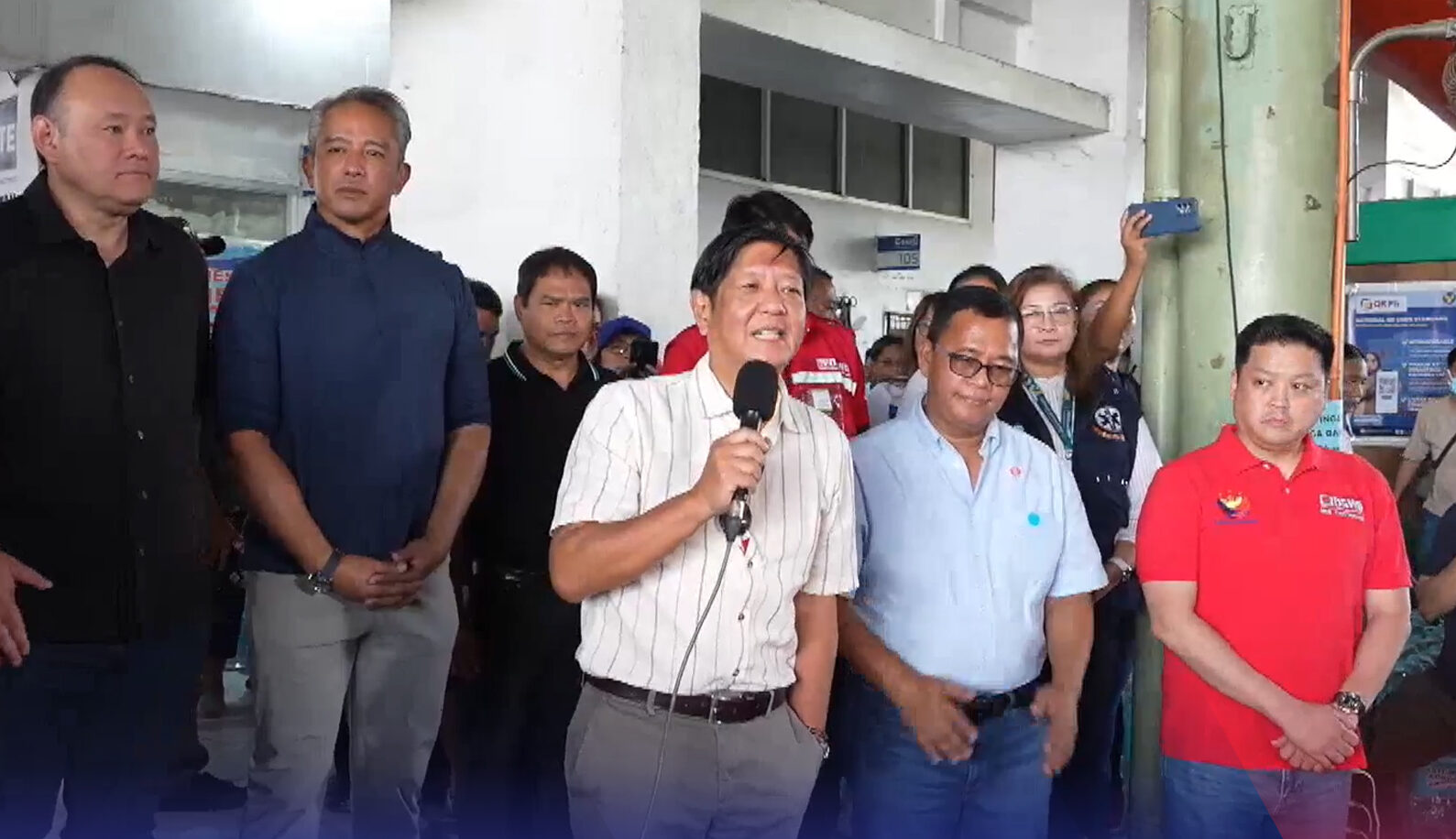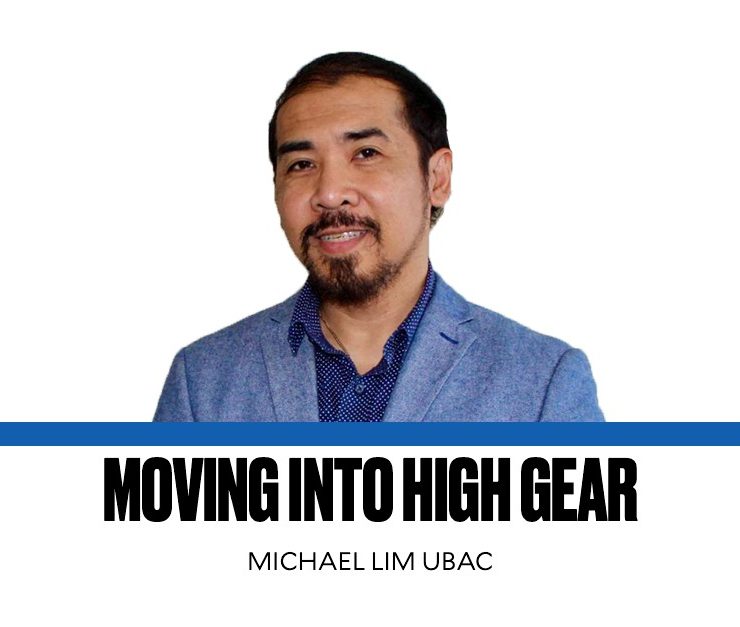‘Bayanihan’ soothes Bicol’s despair
Severe Tropical Storm “Kristine” (international name: Trami) wreaked havoc on a large swath of Luzon by submerging many areas in catastrophic floodwaters or burying them in mud or volcanic mudslides (lahar). According to its category, Kristine was supposed to be weaker than a typhoon.
The Bicol region, affectionately known as Bicolandia, has suffered the most, not least because it was in the direct path of the storm, but far from it. Kristine made landfall way above Bicol, in Divilacan, Isabela, on Oct. 24.
But due to a month’s worth of rainfall that fell in one day, torrential rains quickly flooded roads, homes, and rice fields. The region had its worst flooding in 30 years, as claimed by some Ligao, Albay residents interviewed by the media.
It was President Marcos, during a visit to Naga City, who provided a clearer comparison between Kristine and a typhoon whose severe flooding traumatized many residents of the National Capital Region (NCR). He said the amount of rainfall in Bicol region brought by Kristine doubled that of Tropical Storm “Ondoy” in 2009. Mr. Marcos then raised the issue of revisiting the Bicol River Basin Development Program, which was started by his father in the ’70s but discontinued in 1986.

By the time Kristine exited the country on Oct. 25, more than four days after it began lashing the eastern part of the country as a tropical depression, 125 people were killed, 115 injured, and 28 missing, according to the National Disaster Risk Reduction and Management Council (NDRRMC).
The report, issued on Tuesday, Oct. 29, revealed that the nonstop rains and strong winds brought by the storm inundated rivers, causing landslides and widespread flooding in Luzon, leaving 756 areas from Ilocos to NCR still mired in floods.
To sum up, Kristine’s devastation has reached crisis levels. Besides the high death toll, which makes the storm the country’s deadliest this year, Kristine affected 7.1 million individuals, with close to a million people displaced, half a million marooned in evacuation centers, and some 400,000 forced to shelter elsewhere, the NDRRMC said.
Damage to farms and schools has reached P4.36 billion, said the agriculture and education departments last Saturday, while class suspensions affected 19.5 million students (“‘Kristine’ damage reaches P4.36B,” News, 10/27/24).
CNN captured the state of helplessness and paralysis that engulfed Bicolandia and parts of Batangas, reporting on Oct. 28 that the “the Philippines is prone to extreme weather. But few expected Tropical Storm Trami to be this devastating.”
Quick response
This time, however, the response of the national government was quick and commensurate, although it was mostly the floods, broken bridges, and landslides along highways that hampered the rescue operations and relief efforts.

Hours after Kristine left, Mr. Marcos was already doing an aerial inspection of the Kristine-hit areas in NCR, Cavite, Laguna, and Batangas. The following day, on Oct. 26, Mr. Marcos was in hard-hit Naga, distributing P80 million worth of financial aid to officials of the city and Albay province.
He brought with him members of his Cabinet, including Social Welfare Secretary Rex Gatchalian, who came with 35,000 food packs. By Oct. 28, the Department of Social Welfare and Development (DSWD) in Bicol had managed to release more than 200,000 boxes of family food packs (FFPs) to flooded Bicolanos, part of the total of 672,837 FFPs released by the DSWD central office to disaster-affected regions. As of Oct. 31, a total of 899,945 FFPs were distributed to the storm victims.
Quickly lending a helping hand to the victims were emergency responders from other local government units (LGUs), personnel from the police, military, fire protection, and Coast Guard; Philippine Red Cross; Leni Robredo and her Angat Buhay non-government organization; and private organizations such as the Inquirer. The Philippine National Police (PNP) Maritime Group and other PNP units are still in Bicol, aiding in the rescue of residents trapped in isolated areas and delivering food packs and water.

It is the ‘bayanihan‘ spirit (working together) that unconsciously kicks into action among Filipinos in times of disasters that has been on full display since last week. Without question, Luzon was overwhelmed and highly unprepared for the stronger and more frequent storms that come with climate change.
But caravans of rescue teams, truckloads of relief goods, and water and fuel tankers were seen on TV and social media making a beeline for storm victims in chest-deep floodwaters. Scenes of Bicolanos being evacuated from the roofs of their submerged homes in Camarines Sur and Albay by rescuers on rubber boats painted with the names of LGUs from far-flung provinces tug at the heart.
The juxtaposition of Kristine’s devastation with these scenes provides a glimpse of hope in a picture of gloom and doom, where poverty and LGU’s neglect once again come to the fore. For sure, there must be an accounting of what went wrong—where did the P132 billion Bicol flood control budget go? Why did the Bicol LGUs turn a blind eye to their constituents living in geohazard areas? That time will come, but for now, let’s continue to extend prayers and help to Kristine-hit areas in whatever way we can.
‘Odd trio’
A recent political event engineered by the Senate chief might explain the turn of events that led to this massive government-led effort to help Bicolanos in their hour of greatest need. I think it might have been providential for Senate President Francis Escudero to arrange the first ever meeting between Mr. Marcos and Robredo after the highly-divisive presidential election two years ago.
All three leaders met during the inauguration of the Sorsogon Sports arena on Oct. 17, a few days prior to the onslaught of Kristine.
Escudero said the brief encounter was “symbolic” of the changing political fortunes of the “odd trio,” since all three ran against each other for vice president in 2016. Robredo won that race, but lost to Marcos in the presidential contest in 2022.
Escudero was the leader of the opposition bloc in the House of Representatives from 2004 to 2007 during the crisis-hit Arroyo administration. He successfully ran for senator in 2007. After serving as Sorsogon governor from 2019 to 2022, Escudero returned to his old Senate seat in 2022. On May 20, 2024, he surprised everyone by rising to the helm of the august chamber, with Sen. Alan Peter Cayetano, another vice presidential rival in 2016, nominating him to the post vacated by then Senate president Juan Miguel Zubiri.
Therefore, Escudero’s invitation for Robredo and former Sen. Bam Aquino to welcome the president on Oct. 17 can be seen as a political masterstroke. The Senate chief was then hoping that the move would help “heal any wound or misunderstanding.” Visibly moved, the president told reporters after the encounter: “Senate President Chiz Escudero, who has taken a very important step towards political reconciliation yesterday, well done. I’m so happy you did that.”
Read more: ‘Reconciliation’ afoot? Marcos happy to meet Leni Robredo in Sorsogon
Thus, when Robredo, herself stuck in floodwaters while rescuing residents of her home town of Naga City, made an urgent call on Oct. 23 for more rubber boats and trucks for rescue, the distress call did not fall on deaf ears. “As soon as we can get in, we will be doing that,” Mr. Marcos replied in an ambush interview with reporters. He not only brought rubber boats and trucks, but also all the land, air, and sea assets of his administration to aid and comfort Bicolanos.
For comments: mubac@inquirer.com.ph


















